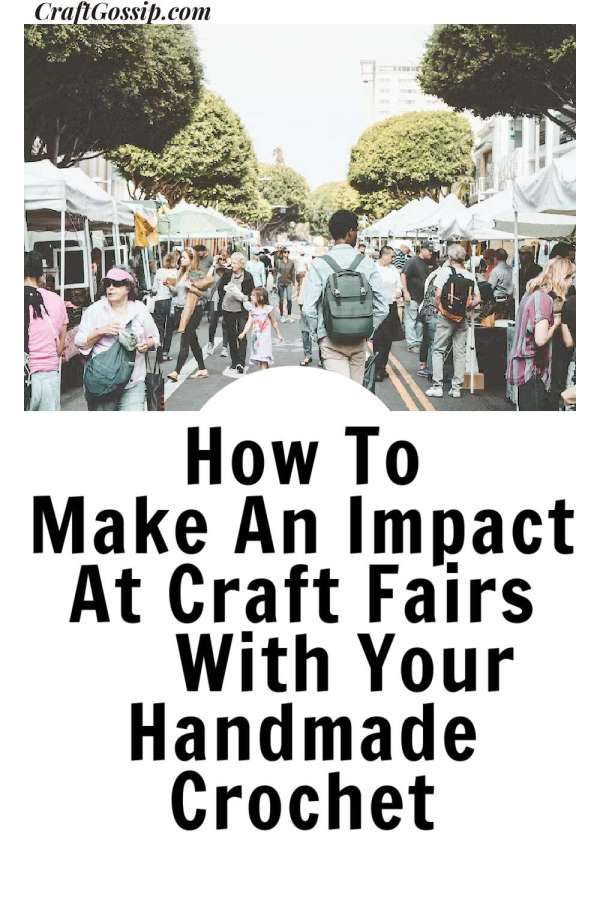
Craft shows or Craft Fairs provide a unique opportunity for artisans and creators to showcase their handmade products, connect with customers, and generate sales. However, standing out in a sea of booths and capturing the attention of potential buyers requires careful planning and execution. Whether you’re a seasoned craft fair vendor or a newcomer, here are some valuable tips to ensure your craft show experience is a resounding success.
1. Strategic Booth Design:
Your booth design is the first thing attendees will notice. It should be visually appealing, inviting, and aligned with your brand. Consider the following elements:
Layout: Plan a layout that allows for easy traffic flow and encourages attendees to explore your products. Avoid clutter and ensure that visitors can navigate your booth comfortably.
Backdrop: Use a backdrop that showcases your brand name or logo. This helps create a cohesive and professional appearance.
Table Setup: Elevate your products by using table risers or shelves to add dimension to your display. Ensure that your tablecloth complements your brand’s aesthetic.
2. Eye-Catching Display:
An eye-catching display can captivate attendees and draw them to your booth:
Color Palette: Choose a color scheme that reflects your brand and product style. Consistency in colors creates a memorable impression.
Product Arrangement: Group similar items together and create visually appealing arrangements. Use props or signage to tell a story about your products.
Featured Items: Highlight your bestsellers or new releases prominently to attract attention.
3. Branding and Signage:
Clear branding and informative signage are essential for conveying your message to visitors:
Business Name and Logo: Ensure that your business name and logo are clearly visible and easy to read.
Price Tags: Display prices clearly on your products or use signage to indicate pricing. Avoid potential customers having to ask about prices.
Product Information: Use descriptive tags or signs that explain what each product is and its unique features.
4. Engaging with Customers:
Interacting with attendees can make a significant impact on your sales and brand perception:
Friendly Approach: Greet visitors with a warm smile and a friendly hello. Create a welcoming atmosphere that encourages conversation.
Product Knowledge: Be prepared to answer questions about your products, materials used, and your creative process. Customers appreciate the opportunity to learn more about what they’re buying.
Demonstrations: If possible, demonstrate your craft or provide mini-workshops to engage attendees and showcase your skills.
5. Offering Samples and Trials:
Providing samples or allowing customers to try your products can help them make purchasing decisions:
Product Testing: If applicable, allow customers to touch, feel, and try on your products. This can create a stronger connection and boost confidence in their purchase.
Samples: Consider offering small samples of your products, especially if you sell consumables like skincare or food items. for crochet , little face rounds are perfect for handing out with your business cards.
6. Creating a Memorable Experience:
Craft fairs are not just about selling products; they’re about creating a memorable experience for attendees:
Personalization: Engage with customers on a personal level by sharing stories about your products and your journey as a crafter.
Photo Opportunities: Create an Instagram-worthy backdrop or installation that attendees can photograph and share on social media.
7. Payment Convenience:
Make the purchasing process smooth and convenient:
Accept Multiple Payment Methods: Ensure you can accept cash, credit cards, and mobile payments. A card reader or payment app can be a valuable tool.
8. Follow-Up Strategy:
Don’t let the connection end after the craft show:
Collect Contact Information: Offer a sign-up sheet or digital QR code for attendees to join your mailing list or follow you on social media.
Thank-You Notes: Send personalized thank-you notes or emails to customers who made purchases. This shows appreciation and encourages repeat business.
9. Evaluate and Learn:
After the craft fair, take time to reflect on what worked and what could be improved:
Feedback: Encourage customers to provide feedback on your booth, products, and overall experience.
Sales Analysis: Analyze your sales data and identify which products were most popular. Use this information to refine your inventory for future events.
Participating in craft fairs requires careful planning, creativity, and a customer-centric approach. By implementing these tips, you’ll be well on your way to making a lasting impact at craft shows and establishing a memorable presence in the crafting community.
Crochet Pattern; chunk Facial Rounds: Perfect for Your Craft Fair
Etsy Feature – Trying To Turn Passion Into A Business
How do you price your crochet items?
Here are my Top 10 Items to Take to a Craft Fair for Your Booth
Participating in a craft fair requires careful preparation to ensure that your booth stands out and attracts customers. To create an inviting and functional display, here’s a list of essential items to bring with you:
- Products: Your main attraction! Make sure you have a variety of your best-selling and most unique products ready for display and sale.
- Table and Covering: A sturdy table that fits your booth space, along with a clean and visually appealing tablecloth that reflects your brand’s aesthetic.
- Display Stands: Use risers, shelves, or display stands to add height and dimension to your booth. These will help showcase your products more effectively.
- Signage and Banners: Clearly display your business name, logo, and any relevant information about your products, pricing, and special offers.
- Lighting: Proper lighting can enhance the visibility of your products, especially if the venue has poor lighting conditions. Consider battery-operated LED lights or string lights.
- Price Tags and Labels: Clearly mark the prices of your products using attractive and easy-to-read tags. Labels with product names and descriptions are also helpful.
- Cash and Payment Options: Have a secure cash box with enough change and a mobile card reader to accept credit and debit card payments.
- Business Cards and Contact Information: Provide customers with your business cards or brochures that include your website, social media handles, and other ways to stay connected.
- Packaging Supplies: Offer attractive bags, boxes, or wrapping paper for customers to package their purchases. This adds to the overall shopping experience.
- Promotional Materials: Hand out flyers, postcards, or coupons that promote your upcoming events, online store, or future craft fairs.
Bonus Items:
- Chair or Stool: A comfortable place to sit during quiet moments is essential for your comfort.
- Mirror: If you’re selling wearable items like jewelry or accessories, a mirror allows customers to see how they look wearing your creations.
- Extension Cords: In case you need to plug in lights, chargers, or any other electronic devices.
- Backdrop or Back Wall: If the craft fair allows it, a branded backdrop can provide a polished and professional look to your booth.
- Notepad and Pen: Keep track of customer orders, inquiries, or any notes you need to remember.
Remember, the goal is to create an inviting and organized booth that not only showcases your products but also offers a memorable experience for your customers. Plan ahead, pack strategically, and be prepared to make a lasting impression at the craft fair.





Leave a Reply